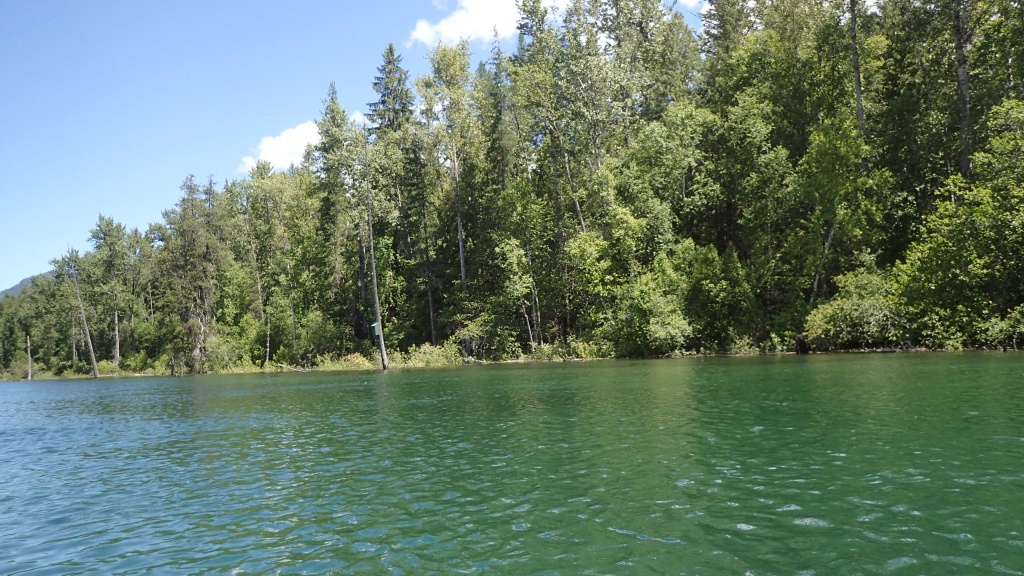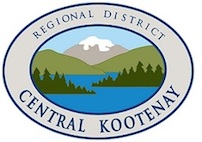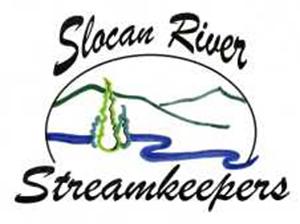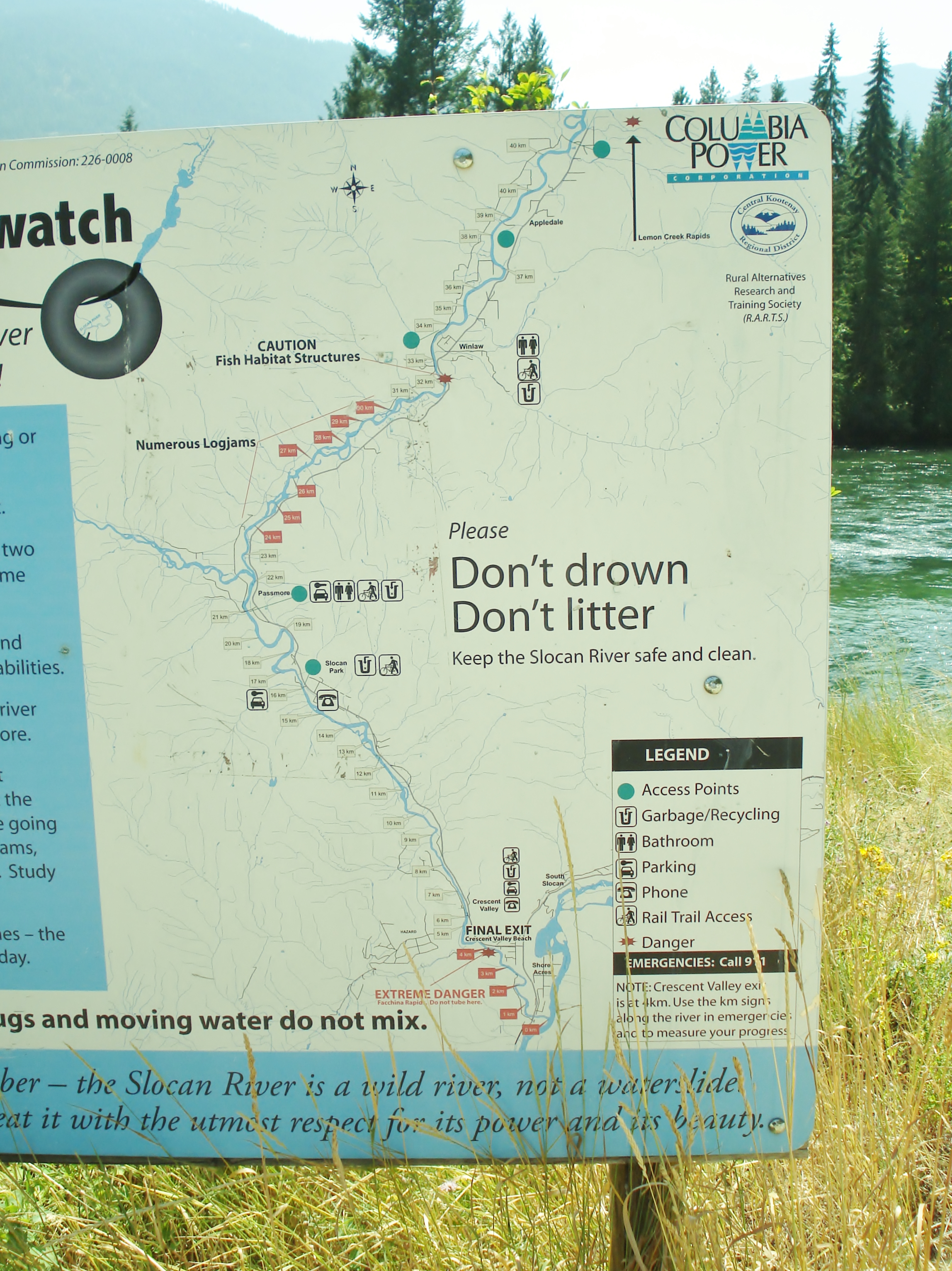Slocan River Streamkeepers’ AGM 2023

The Slocan River Streamkeepers’ Annual General Meeting will convene on September 11 at 6pm in the Slocan Valley Threads Guild (7112 Perry’s Back Rd).
Slocan River Streamkeepers have worked with the community for nearly 20 years to protect and rehabilitate the aquatic and wetland ecosystems of the Slocan River through education, restoration and monitoring.
We’ll be calling for Board of Directors nominations.
Referendum on Local Conservation Fund in Electoral Area H passes

A big Thank you! to everyone who voted and supported a Local Conservation Fund in Electoral Area H.
https://www.rdck.ca/EN/meta/news/news-archives/2022-news-archive/referendum-on-local-conservation-fund-in-electoral-area-h-passes.html

Trozzo and Winlaw Creek Water Users Fall 2022
Fall 2022 Water Quality Updates: Water samples from Trozzo and Winlaw creeks taken by Slocan River Streamkeepers in collaboration with SIFCo.

Water Analysis Reports:
Water Analysis Report for metals and nutrients from Caro Analytic Services for water samples collected on November 1st, 2022:
https://slocanriverstreamkeepers.files.wordpress.com/2022/11/22k0537_1-caro-e1-2022-11-18-1745.pdf
Water Analysis Report for metals and nutrients from Caro Analytic Services for water samples collected on October 24, 2022:
https://slocanriverstreamkeepers.files.wordpress.com/2022/11/22j3309_1-caro-e1-2022-11-18-1731.pdf
Water Analysis Report from Passmore Laboratory, water samples collected on October 11, 2022:
https://slocanriverstreamkeepers.files.wordpress.com/2022/10/2210112310.pdf
Water Analysis Report for metals and nutrients from Caro Analytic Services for water samples collected on September 16, 2022
https://slocanriverstreamkeepers.files.wordpress.com/2022/10/22i2441_1-caro-e1-2022-10-05-1523.pdf
Water Analysis Report from Passmore Laboratory, water samples collected on September 16, 2022:
https://slocanriverstreamkeepers.files.wordpress.com/2022/09/2209162271.pdf
Water Analysis Report from Passmore Laboratory, water samples collected on September 13, 2022:
https://slocanriverstreamkeepers.files.wordpress.com/2022/09/2209132270.pdf
The Little Slocan Watershed
The Little Slocan logging animation shows the history of logging, sometimes characterized as “sustainable forestry,” from 1955 up to, and including, 2021. This logging, carried out by Interfor Corporation (Interfor) and its predecessors has, and continues to degrade the forests of the Little Slocan River watershed (Little Slocan). The myriad ecological benefits of intact forests are diminished and lost as logging continues. The logging animation shows the ongoing deforestation of the Little Slocan. Through clearcutting natural, diverse forests are converted to tree plantations that are groups of trees, but are not forests. Thus, forests are continuing to be lost in the Little Slocan. (read more...

Trozzo and Winlaw Creek Water Users



Spring 2022 Water Quality Updates: Water samples from Trozzo and Winlaw creeks taken by Slocan River Streamkeepers in collaboration with SIFCo.
Water Analysis Reports:
Water Analysis Report from Passmore Laboratory, June 15, 2022: https://slocanriverstreamkeepers.files.wordpress.com/2022/06/2206152120.pdf
Water analysis report for metals and nutrients from Caro Analytic Services from May 19, 2022:
https://slocanriverstreamkeepers.files.wordpress.com/2022/06/22e2890_1-caro-e1-2022-06-01-1446.pdf
Water Analysis Report from Passmore Laboratory, May 19, 2022:
https://slocanriverstreamkeepers.files.wordpress.com/2022/05/2205192066-1.pdf
Results for the E. coli samples taken on Winlaw Creek and Trozzo Creek on May 19th, 2022 did not meet Canada’s guidelines for drinking water quality for the Total Coliform test. Total Coliforms are not associated with human infection but may indicate the presence of other harmful organisms.
Water Analysis Report from Passmore Laboratory, May 6, 2022:
https://slocanriverstreamkeepers.files.wordpress.com/2022/05/2022-05-06-e.coli_2205122059.pdf
Results for the E. coli samples taken on Winlaw Creek and Trozzo Creek on May 6th, 2022 did not meet Canada’s guidelines for drinking water quality because there are counts of Total Coliforms and E.coli. Therefore, it is probably a good idea for residents to consider treating their water during and after large rain events, and to have their water tested regularly. See the information sheet from Passmore Labs with more info on the subject.
In terms of nutrients and metals, results from the first and second round of sampling show that there are nutrients and metals detectable in in the water samples, but none that exceed Canada’s guidelines. Results from the third round of sampling are expected within the next couple of days.
Water analysis report for metals and nutrients from Caro Analytic Services from May 9, 2022:
https://slocanriverstreamkeepers.files.wordpress.com/2022/05/22e1279-1-caro-e1-2022-05-18-1709.pdf
Water analysis report for metals and nutrients from Caro Analytic Services from April 19, 2022:
https://slocanriverstreamkeepers.files.wordpress.com/2022/05/22d2515_1-caro-e1-2022-05-09-1015.pdf
For more information on drinking water from Passmore Laboratory:
https://slocanriverstreamkeepers.files.wordpress.com/2021/08/drinking-water-information-1.pdf
Trozzo and Winlaw Creek Water Users
For more information on drinking water from Passmore Laboratory:
https://slocanriverstreamkeepers.files.wordpress.com/2021/08/drinking-water-information-1.pdf
Water Analysis Reports:
Water Analysis Report from Passmore Laboratory, October 23, 2021:
https://slocanriverstreamkeepers.files.wordpress.com/2021/10/2110191826.pdf
Water analysis report for metals and nutrients from Caro Analytic Services from September 22, 2021:
https://slocanriverstreamkeepers.files.wordpress.com/2021/10/21i3202_1-caro-e1-2021-10-01-1622.pdf
Water Analysis Report from Passmore Laboratory, September 22, 2021:
https://slocanriverstreamkeepers.files.wordpress.com/2021/09/2109221775.pdf
Water Analysis Report from Passmore Laboratory, September 13, 2021:
https://slocanriverstreamkeepers.files.wordpress.com/2021/09/2109131756.pdf
Water analysis report for metals and nutrients from Caro Analytic Services from September 13, 2021:
https://slocanriverstreamkeepers.files.wordpress.com/2021/09/21i1744_1-caro-e1-2021-09-22-1615.pdf
Water Analysis Report from Passmore Laboratory September 3, 2021:
https://slocanriverstreamkeepers.files.wordpress.com/2021/09/2109021740.pdf
Water Analysis Report from Passmore Laboratory August 30, 2021:
https://slocanriverstreamkeepers.files.wordpress.com/2021/08/2108301725.pdf
Water Analysis Report from Passmore Laboratory August 27, 2021:
https://slocanriverstreamkeepers.files.wordpress.com/2021/08/2108231710.pdf
Water analysis report for metals and nutrients from Caro Analytic Services August 23, 2021:
Code: WIN-WQ01 = Winlaw Creek —– TRO-WQ01 = Trozzo Creek
https://slocanriverstreamkeepers.files.wordpress.com/2021/09/21h3009_1-caro-e1-2021-09-10-0940.pdf
Riparian Restoration
Thanks to Slocan Integral Forestry Cooperative for producing this great video about our riparian restoration program.
Thanks to our many Funders who have supported our riparian restoration work in the Slocan Valley. They include Columbia Basin Trust, Columbia Power Corporation, The Province of BC, Fish and Wildlife Compensation Program, Environment and Climate Change Canada, Ardcorp, FortisBC, BCWF, CBWN, RDCK and SIFCo.
Thanks also to all our volunteers, helpers, workers, streamkeepers, local schools and especially landowners for your support!
Enjoy Slocan River…
Image & text layout by Dominique Monnier
Slocan Riverwatch Map of the Slocan River
Slocan River Streamkeepers’ Riparian Restoration Project

It’s a fact of our bygone days that cottonwood groves used to be common near the riverside in the Slocan Valley. They provided important habitat and soil-preserving benefits to the riparian areas. Historical land-use practices, and resident attitudes of former times (stretching back many decades), resulted in the clearing or decimation of a great deal of these stream-side groves. However, more recently, attitudes have been shifting.
The Slocan River Streamkeepers, a community organization with an 18-year history, will continue this year to carry out their “Riparian Restoration Project.” The project’s aim is to restore degraded riparian areas at four separate sites along the river, to reduce bank erosion, and create long-term wildlife habitat. Riparian ecosystems are known to benefit fish habitat, and are a positive factor in our engagement with climate change. According to the BC Conservation Data Centre, cottonwood ecosystems of the southern interior are among the rarest plant communities in the province.
Wherewithal to continue Streamkeepers’ work has arrived through the financial support from the Healthy Watersheds Initiative, which is delivered by the Real Estate Foundation of BC and Watersheds BC, with financial support from the Province of British Columbia.
This year, the Streamkeepers’ work will involve planting native trees (cottonwood, willows, red osier dogwood, alder and so on). The young trees will be protected from beavers by a combination of tree protectors and fencing.
Integral to the project, Streamkeepers will install 50 bird nesting boxes (short-term habitat) along Slocan River for species at risk, including Lewis’s woodpecker, western screech owl, and barn swallows — and for other, not-at-risk species, such as violet-green and tree swallows. Some bat boxes will also be installed.

Another dimension of the project includes monitoring of the sites to document the plants already established and survival rate of the newly established trees, also to ascertain how many birds have nested in previously installed nesting boxes, as well as how many will nest in 2021. Likewise, it will document the use of the already installed bat boxes, and the new ones to be installed this year.
In support of the restoration of damaged riparian ecosystems, the HWI funding will help in creating six part-time jobs in the Valley. The Slocan River Streamkeepers are extremely grateful for the support of this work by Healthy Watersheds Initiative, the Real Estate Foundation of BC, Watersheds BC, and the financial support from the Province of British Columbia.
Other funding for this project provided by Columbia Basin Trust, FortisBC and The Nature Trust of British Columbia.
In keeping with the Streamkeepers’ established approach, the group will continue their public outreach with local residents and landowners, sharing information about the importance of protecting riparian areas (or restoring, when needed).
People interested in part-time work in this project may send requests and résumés to: info@slocanriverstreamkeepers.com
Slocan River Community Water Monitoring 2019-2020
Slocan River Community Water Monitoring 2019-2020

Download the full report: Slocan River Community Water Monitoring 2019-2020
Slocan River Community Water Monitoring 2019-2020 is a community-based monitoring program conducted by the Slocan River Streamkeepers. It is a continuation of a program that has been happening intermittently since the 1990’s. The program aims to monitor the effects of climate change and human activities on aquatic and floodplain ecosystems that provide habitat for many species and provide drinking sources and agricultural irrigation to local communities. Additionally, the project involves an environmental education program that aims to connect students to the rich and diverse web of life that contributes to a healthy watershed.
This report documents the ecological assessment and educational outreach program in the Slocan Valley for the 2019-2020 year. Previous assessments occurred between 2008 and 2013. Activities resumed in August 2019 and will continue into 2021. Four important issues threatening the integrity of the Slocan Valley watershed were chosen to be addressed:
1. Effects of turbidity caused by stream bank erosion on water quality and aquatic species downstream of the landslide on Little Slocan River,
2. Changes of water levels on community waters sources,
3. The recovery of aquatic life in Lemon Creek.
4. Rising water temperatures in Slocan River and its effect on aquatic ecosystems.
Thank you to our funders, Columbia Basin Trust (CBT), Slocan Integral Forestry Cooperative (SIFCo) and Columbia Basin Watershed Network (CBWN), for making this possible and for supporting us to do this important work.


Go to Water Monitoring
Slocan River Streamkeepers turns tires into trees!
Recently, a long-awaited project along the Slocan River was finally completed. Over 30 years ago, a local landowner was working on some bank stabilization for his property. Back in those days there were fewer regulations and used tires (and other recycled materials) were often used to stabilize the banks along the river. Today the tires are not welcome along the riverbank, and bank stabilization projects will use either rocks, logs or living trees, or sometimes a combination of all of the above, instead.
The landowner eventually passed away before completing the project, and a large pile of used tires were left near the river in the floodplain. At high water the tires would be under water for many weeks, and when the river went down in mid or late summer the tall reed-canary grass would cover the tires, and they were then left ignored.
After many years and many conversations with local people and government agencies, it seems that nobody wanted to take responsibility to dispose of the tires properly.
Slocan River Streamkeepers (SRS) eventually took on the initiative to solving that issue. After securing a small amount of money from RDCK to cover the fees and the cost of bringing the tires to the transfer station, SRS also received some financial support from Fish and Wildlife Compensation Program to replace the tires by planting native trees & shrubs.
Synchronicity brought out a small group of energetic young people to help out with the effort. Youth Climate Corps, a project managed by Wildsight, supplied a group of seven motivated youth to the Slocan Valley for five days to help local organizations with environmental and educational projects, and to look at implementing solutions in regards to climate mitigation and adaptation. They were very keen to help out with the tire cleanup project.
We found out that the transfer station would not accept the tires if they were covered with soil or grasses. So early in the day, the tires were lifted off the ground with pry bars and other tools and then brought out along the road to be washed. After a good clean-up, a small group of local volunteers showed up with their pickup trucks to load up the tires and haul them away to the transfer station in Ootischenia. (Slocan transfer station only accepts smaller tires and there were a mix of large and small tires at the site). Except for one truckload, the tires were all removed and sent away that day. In the end, a total of 104 tires were removed from the site.
The next day, our group of young enthusiasts were ready to start planting trees. Holes were dug and a total of 50 native trees and shrubs including willows, cottonwood, red osier dogwood and mountain alders were planted as well as some red cedars and spruce for higher ground. Tree protectors were also installed on the trees, as this area is also regularly visited by local beavers. Trees were mulched with wood chips and watered at the end of the day.
Another part of the project was to install some bird nesting boxes. Five tall cedar posts were planted and bird boxes installed. The main purposes of the bird boxes is to attract cavity nesting swallows (tree swallow and violet-green swallow) to help reduce the local mosquito population in summer.
In the last three years, Slocan River Streamkeepers have installed over 100 bird nesting boxes and 12 bat boxes along the Slocan River to help minimize mosquito population. They are already seeing over 50% occupancy in the birdhouses and some sites have 100% occupancy. So the birdhouses are for short-term housing needs and the trees and shrubs are planted for longterm habitat for birds and other wildlife. Trees planted along the riverbanks also help reduce bank erosion and eventually provide shade and help cool down the river (cooler water offers better condition for fish population). As the trees get bigger and older they will eventually fall down in or along the river and provide habitat for fish and other wildlife.
In the last 15 years, Slocan River Streamkeepers have implemented over 50 riparian restoration projects including three with fish habitat recruitment structures and two wetland restoration projects. SRS are often looking for properties along the river to implement more riparian restoration projects when neded.
SRS also invite people to volunteer or become members ($10/yr) and make a small or large donation to help with restoration work as well as water monitoring, scientific research and public outreach.
Slocan River Streamkeepers would like to thank all our volunteers and everyone who helped make this project happen!
Thanks to Youth Climate Corps (a youth program managed by Wildsight) Thanks to YRB (Winlaw)
Thanks to our funders and sponsors for this project:


& Thanks to all the generous donors!
Membership and donation can be sent to Slocan River Streamkeepers Box 47, Winlaw, BC V0G 2J0.







